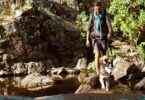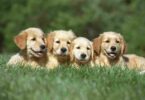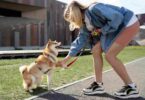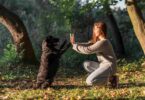Living in an urban environment presents a whole new set of challenges for both humans and their dogs. The constant hum of traffic, the dense crowds, and the ever-present distractions are all part of city life—but they don’t have to be obstacles. With the right training, your dog can thrive in the hustle and bustle of the urban jungle. In fact, they can become an adaptable, well-mannered companion who embraces the city’s rhythm rather than resenting it.
1. Desensitizing to Noise: Building a Resilient Pup
The city is loud—there’s no escaping that. The shrill of sirens, the rumble of buses, the chatter of pedestrians—all these sounds can be overwhelming for a dog, especially one used to quieter environments. So, how do you prepare your dog for this auditory overload? Desensitization is key. Slowly introduce your dog to these sounds, starting with quieter, controlled environments and progressively increasing the volume or intensity. Pair these exposures with treats, praise, and a calm demeanor. Over time, your dog will learn to filter out the noise and stay focused on you, turning anxiety into confidence. The world may be noisy, but to your dog, it becomes just another part of the landscape.
2. Mastering Leash Manners: A Skill for Safety
In urban settings, leash manners are not just a luxury—they’re a necessity. The sidewalks are crowded, the streets are busy, and one sudden tug could send you or your dog into danger. Teaching your dog to walk calmly beside you, without pulling or lunging, is essential. Start by practicing in less crowded areas, using positive reinforcement to reward loose-leash walking. Once your dog grasps the concept, move to busier streets, gradually increasing the distractions. Consistency is crucial—your dog needs to understand that pulling gets them nowhere. A controlled walk is not just a display of good behavior; it’s a matter of safety.
3. Navigating Crowds: From Chaos to Calm
City life means encountering crowds, and for some dogs, the sight of a bustling group of people can be stressful or even overwhelming. Socializing your dog to different types of people—young, old, fast-paced, or slow-moving—will help them understand that not everyone they meet requires a reaction. Positive exposure is the key here: reward calm behavior when your dog is surrounded by people. Over time, your dog will become more at ease, learning to move through crowds without fear or aggression. It’s not just about obedience; it’s about teaching your dog to read social cues and adjust their behavior to different social environments.
4. Traffic and Urban Hazards: Enhancing Street Smarts
Perhaps one of the most intimidating aspects of city life is the sheer amount of traffic and hazards that dogs must navigate. From speeding cars to cyclists zooming past, the city can be a dangerous place for an untrained dog. Training your dog to stay focused amidst traffic is critical. Start by teaching basic commands like “stop” or “wait” in a low-distraction environment, then slowly introduce controlled exposure to streets with traffic. Use positive reinforcement to reward calm, controlled behavior when they encounter moving vehicles. Teach your dog to stop at curbs and crosswalks and to wait for cues from you before proceeding. The goal is to instill a sense of awareness and street smarts—so that your dog learns how to navigate these potential hazards with confidence and safety.
5. Elevating Social Skills: Dogs, Cafes, and Public Spaces
One of the joys of urban living is the abundance of dog-friendly spots—cafes, parks, even shops that welcome your canine companion. But for your dog to truly enjoy these spaces, they need solid social skills. Training your dog to behave calmly in public spaces where there are other dogs and people is an essential aspect of urban living. Start by introducing your dog to less crowded areas and gradually increase the level of distraction. Practice commands like “sit” and “stay” in these busy settings, rewarding calmness and good behavior. Over time, your dog will learn to associate these bustling public spaces with positive experiences, allowing them to feel comfortable and relaxed in any environment.
6. Creating a City-Friendly Routine: Structure and Stability in a Fast-Paced World
Urban environments are fast-paced, and sometimes it feels like there’s no time to breathe. However, dogs thrive on routine and consistency, even in the midst of chaos. Establishing a regular schedule for walks, meals, and training sessions can help provide structure and stability for your dog. Regular exercise is essential in an urban setting, not just for physical health but for mental stimulation as well. Taking your dog to different environments—parks, urban trails, or even dog-friendly cafes—keeps their routine interesting while reinforcing the idea that their world is both safe and predictable. In a city that never sleeps, your dog will come to rely on their schedule for comfort and balance.
7. Mental Stimulation in the City: More Than Just Walks
While physical exercise is important, mental stimulation is equally crucial. Urban environments are full of sensory experiences—smells, sights, sounds—that can keep your dog’s mind engaged. Enrich your dog’s daily routine with puzzle toys, scent work, or hide-and-seek games that encourage them to use their brains. Take them to new places where they can sniff out new environments, or integrate training games into your daily walks. The more you engage their minds, the better they’ll be at adjusting to the urban environment, handling distractions, and remaining calm and focused in various situations.
8. Urban Safety and Health: Staying Fit in a Concrete World
Urban dogs face unique health challenges, from the heat of the asphalt to the pollution in the air. It’s important to keep your dog in top physical condition, not just through exercise but by ensuring their health is well-maintained. Make sure your dog is protected from the harsh elements—consider booties for their paws in the summer and a coat in the winter. Regular vet check-ups and a balanced diet are essential for urban dogs, as they are exposed to different health risks in the city, from traffic accidents to airborne allergens. Staying vigilant about their health and fitness will ensure your dog can thrive in the urban jungle for years to come.




